A team of Chinese scientists has suggested that what you drink following the consumption of alcoholic beverages could alter the effect of alcohol on your body. Following tests on a number of drinks, the carbonated drink Sprite emerged as a potential reliever of alcohol-related symptoms.

Could altering the activities of alcohol dehydrogenase and aldehyde dehydrogenase ease a hangover?
The effects of drinking excessive amounts of alcohol are well known. In the short-term, alcohol leads to feeling drunk followed by a hangover, while regularly consuming more than the recommended amount of alcohol can cause liver disease, heart disease, stroke and cancer.
Some of the adverse effects of alcohol are thought to be caused, not by the ethanol itself, but by ethanol’s first metabolite, acetaldehyde. Ethanol is metabolised into acetaldehyde by an enzyme know as alcohol dehydrogenase (ADH) and then into acetate by aldehyde dehydrogenase (ALDH). Unlike acetaldehyde, acetate is innocuous and may even be responsible for some of the positive health benefits of alcohol consumption. Therefore the key to reducing alcohol-related damage lies in minimising the amount of time acetaldehyde is present in the body.
Hua-Bin Li and co-workers from Sun Yat-Sen University in Guangzhou hypothesised that substances which alter the activities of ADH and ALDH would consequently alter the duration acetaldehyde exposure. They went on to systematically test the effect a variety of common carbonated beverages and herbal teas had on ADH and ALDH activity assays.
Read the full article in Chemistry World»
Read the original journal article in Food & Function:
Effects of Herbal Infusion, Tea and Carbonated Beverage on Alcohol Dehydrogenase and Aldehyde Dehydrogenase Activities
Sha Li, Li-Qin Gan, Shu-Ke Li, Jie-Cong Zheng, Dong-Ping Xu and H B Li
Food Funct., 2013, DOI: 10.1039/C3FO60282F



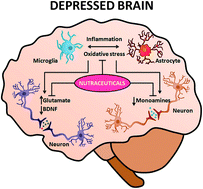









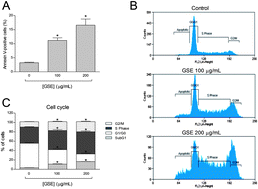

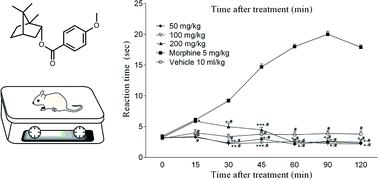
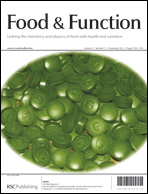 The front cover this month features work by Petr Nachtigal and co-workers from Prague, Czech Republic. In their work they investigate whether Spirulina Platensis, a water blue-green alga, can activate atheroprotective heme oxygenase-1 (Mnox1) – a mechanism which would suggest the benefit of S. platensis as a food supplement in the reduction of atherosclerotic disease.
The front cover this month features work by Petr Nachtigal and co-workers from Prague, Czech Republic. In their work they investigate whether Spirulina Platensis, a water blue-green alga, can activate atheroprotective heme oxygenase-1 (Mnox1) – a mechanism which would suggest the benefit of S. platensis as a food supplement in the reduction of atherosclerotic disease.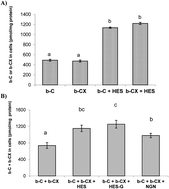
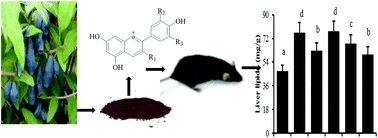


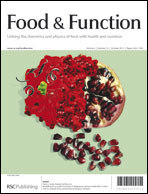 The front cover this month features work by Daniele Del Rio and co-workers from Parma, Italy. In their work they propose an in silico approach to evaluate the potential xenoestrogenic agonistic behavior of ellagitannin-derived metabolites, and highlight xenoestrogenic activity that differs depending on the chemical structure.
The front cover this month features work by Daniele Del Rio and co-workers from Parma, Italy. In their work they propose an in silico approach to evaluate the potential xenoestrogenic agonistic behavior of ellagitannin-derived metabolites, and highlight xenoestrogenic activity that differs depending on the chemical structure.

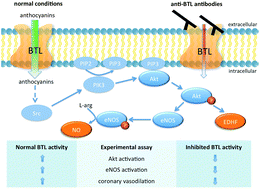

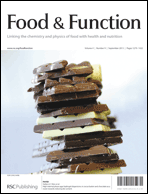 The front cover this month features work by Stefan Bon and co-workers from Warwick, UK. In their work they show that the dispersion of agar microgels into chocolate formulations can be used to reduce fat content, and also allows for the introduction of alcoholic beverages whilst preserving the desired polymorph V of the cocoa butter matrix.
The front cover this month features work by Stefan Bon and co-workers from Warwick, UK. In their work they show that the dispersion of agar microgels into chocolate formulations can be used to reduce fat content, and also allows for the introduction of alcoholic beverages whilst preserving the desired polymorph V of the cocoa butter matrix.